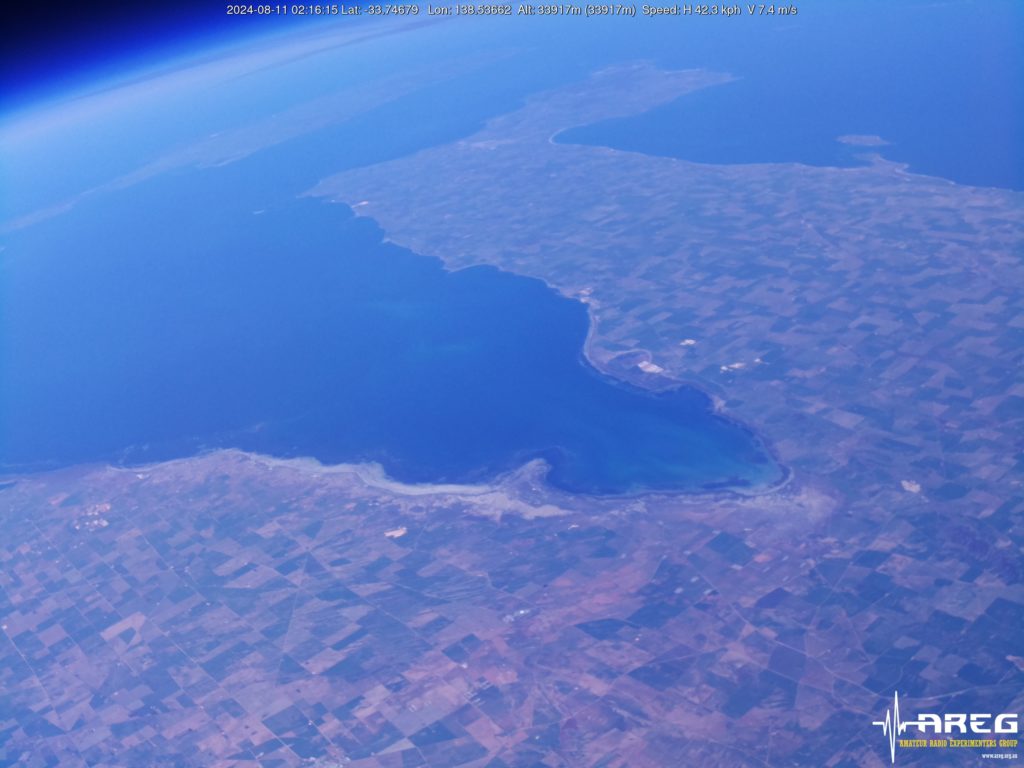UPDATE: Today’s launch was a great success, with all launch objectives achieved, and the payloads recovered by members of the Riverland Radio Club! A (short) writeup will be coming soon. Our next launch will be on Sunday the 2nd of November as part of the LaunchBox “Summit to the Stratosphere” STEM day!
AREG’s High-Altitude Ballooning sub-group, Project Horus, is planning their next launch for Saturday the 18th of October, with a planned launch time of 10:30 AM ACDST. There will be no backup date for this launch – if the weather is extremely poor, then the launch will be scrubbed.
This will be a small launch, testing some payloads related to the upcoming LaunchBox launch, occurring on Sunday the 2nd of November. This will include a standard Horus Binary tracking payload, and possibly a Wenet imagery payload.
The launch site for this flight will be the Mt Barker Summit Sport & Recreation Park oval, located just to the east of Mt Barker, and accessible off Springs Road and Heysen Boulevard. As there will be cricket played on the oval, we will be in the paddock area to the North-West of the grandstand. 
TRACKING LINKS
- Flight Tracking via SondeHub-Amateur: https://amateur.sondehub.org/#!mt=Mapnik&mz=9&qm=12h&mc=-35.0677,139.23902
- Live Wenet Imagery: https://ssdv.habhub.org/
Details of the frequencies in use on this flight are:
- Primary Horus Binary telemetry on 434.200 MHz
- Wenet Imagery on 443.5 MHz. (Now receivable using a web browser! See below!)
On this flight we encourage new listeners to try out our new web-browser-based decoding software for Horus Binary and Wenet – find out more about this further below!
During the flight, all the payloads can be tracked lived on the SondeHub-Amateur tracker here!
Primary Telemetry – Horus Binary 434.200 MHz – HORUS-V2
 The primary tracking telemetry will be transmitted on 434.200 MHz using the Horus Binary 4FSK data mode. Amateurs in the Adelaide and Central SA region are also encouraged to get involved with the flight through receiving and uploading flight telemetry from our 70cm band tracking beacons. Every piece of telemetry data is valuable to the flight tracking and recovery teams so if you can help join the distributed receiver network to collect that data you will be making an important contribution to the project!
The primary tracking telemetry will be transmitted on 434.200 MHz using the Horus Binary 4FSK data mode. Amateurs in the Adelaide and Central SA region are also encouraged to get involved with the flight through receiving and uploading flight telemetry from our 70cm band tracking beacons. Every piece of telemetry data is valuable to the flight tracking and recovery teams so if you can help join the distributed receiver network to collect that data you will be making an important contribution to the project!
If you try receiving the telemetry from this flight, you’ll need a SSB-capable 70cm receiver (or a SDR), and the Horus-GUI telemetry decoder software. A brief guide on setting this up is available here: https://github.com/projecthorus/horusdemodlib/wiki/1.1-Horus-GUI-Reception-Guide-(Windows-Linux-OSX)
Note that you will need to use a USB ‘dial’ frequency of 434.199 MHz for the 4FSK signal to be centred in your receiver passband and hence be decodable.
Horus Binary telemetry can now also be received using your web browser, using either a SSB receiver or even a RTLSDR!
Click this link to start up a browser-based receiver:
We’ve also got a guide on how to use this here: https://youtu.be/VrgqF7ly-mU
Wenet Imagery – 443.500 MHz – USING NEW v2 MODE!
Imagery on this flight will be transmitted via the Wenet downlink system, which uses 96 kbit/s Frequency-Shift-Keying to send HD snapshots. Reception of the Wenet imagery requires a RTLSDR, and a 70cm antenna with some gain (a 5-element Yagi is usually enough).
We will be using the new ‘Wenet v2’ mode, as trialed on Horus 64B. There is information on updating existing Wenet receive setups available here.
Wenet can now be received on almost any modern computer, and even some newer android devices, using the new WebWenet software! This operates entirely within a web browser. Information on how to get setup to use this is available here: https://www.youtube.com/watch?v=Euo4BGB6wUU
Click this link to start up a browser-based receiver:
Wenet Web Receiver – 443.5 MHz
This payload will be giving the PiCam v3 one last go before we give up and revert back to the PiCam v2.
We encourage new listeners to try out the WebWenet software for decoding signals on this flight – however you can also still receive the signal using the Linux-based decoder, with details on this available here:
https://github.com/projecthorus/wenet/wiki/Wenet-RX-Instructions-(Linux-using-Docker)
During the flight, the live imagery will be available at this link: http://ssdv.habhub.org/


